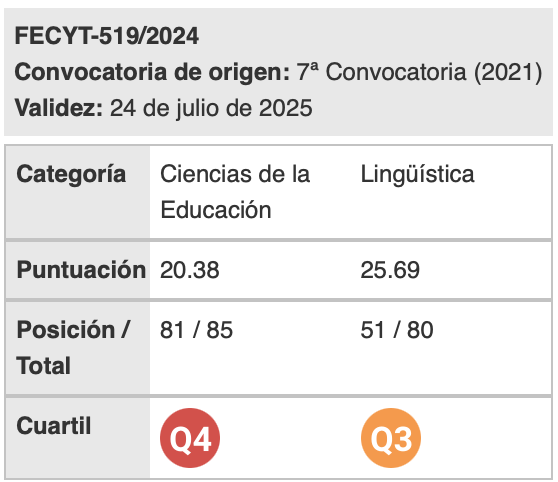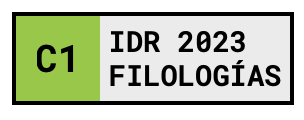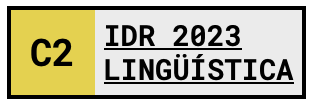The implementation of effective dual-language programs
Keywords:
evaluation, implementation, dual-language education programs, MMRAbstract
This research investigates the ways of implementing dual-language programs and the schools’ internal procedures of evaluating them. Previous studies have examined the effectiveness of bilingual programs (Genovesee et al. 2005; Howard et al. 2005; Krashen 2004). However, there is little still known about schools’ procedures that systematize the organizational aspect of such programs. The Mixed Methods Research (MMR) approach was applied in this study to analyze data collected through questionnaires, interviews, and case studies. The results of the study were combined and interpreted together. They bore out that the schools that have not introduced an effective internal evaluation system need institutional support in the form of practical publications / guides, referring to the organization of such programs, as well as in-house teacher and management training. There are often no forms of such training or resources available. This calls for improvement.
DOI: 10.20420/rlfe.2015.0014
Downloads
References
Baker, C. (2011). Foundations of bilingual education and bilingualism, 5th edition. Clevedon: Multilingual Matters.
Baker, C. (2001). Foundations of bilingual education and bilingualism, 3rd edition. Multilingual Matters, Clevedon.
Baker, K. A., & de Kanter, A. A. (1983). Bilingual education: A reappraisal of federal policy. Lexington, MA: Lexington Books.
Brisk, E. (2010). Bilingual Education. From compensatory to quality schooling. Routledge: London and New York.
Casanova, U., Arias, M. B. (1993). Contextualizing bilingual education. In M. B. Arias & U. Casanova (Eds.), Bilingual education: Politics, practice and research, (pp. 1-35). Chicago: University of Chicago Press.
Cazabon, M., Lambert, W. E., & Hall, G. (1993). Two-way bilingual education: A progress report on the Amigos Program, Research Report No. 7. University of California, Santa Cruz, CA: The National Center for Research on Cultural Diversity and Second Language Learning.
Clay, M., Cazden, C. (1992) A Vygotskian interpretation of reading recovery. In Cazden, C. (Ed.), Whole language plus: Essays on literacy in the US and NZ. New York: Teachers College Press.
Council of Europe. (2010). Guide for the Development and the Implementation of curricula for plurilingual and intercultural education. <https://www.coe.int/t/dg4/linguistic/Source/ Source2010_ForumGeneva/GuideEPI2010_EN.pdf> [10/10/2013]
Coyle, D., Hood, P., & Marsh, D. (2010). CLIL: Content and language integrated learning. Cambridge: Cambridge University Press.
Creswell, J. W., & Plano Clark, V. L. (2010). Designing and conducting mixed methods research, 2nd edition. London: Sage Publications.
Creswell, J. W., Klassen, A. C., Plano Clark, V. L., & Smith, K. C. for the Office of Behavioral and Social Sciences Research. (2011). Best practices for mixed methods research in the health sciences. Washington, DC: National Institutes of Health. <http://obssr.od.nih.gov/mixed_ methods_research> [10/12/2014]
Cummins, J. (2006). Language, power and pedagogy. Bilingual children in the crossfire. Great Britain: Cambarian printers Ltd.
Cummins, J. (2013). Content and language integrated learning (CLIL): Research and its classroom implications. Padres y Maestros, 349, 6-10.
Dalton-Puffer, C. (2011). Content and language integrated learning: from practice to principles. Annual Review of Applied Linguistics, 31, 182-204.
Danoff, M., Coles, G., McLaughlin, D., & Reynolds, D. (1978). Evaluation of the impact of ESEA Title VI1 Spanish/English bilingual education programs (vols. 1-3). Palo Alto, CA: American Institutes for Research.
Dulay, H. C., & Burt, M. K. (1978). Some remarks on creativity in language acquisition. In W. C. Ritchie (Ed.), Second language acquisition research: Issues and implications (pp. 65-89). New York: Academic Press.
Escobar Urmeneta, C. (2010). Pre-service CLIL Teacher-Education in Catalonia: Expert and novice practitioners teaching and reflecting together In: D. Lasagabaster & Y. Ruiz de Zarobe (Eds.), CLIL in Spain: Implementation, results and teacher training (pp. 189-218). Newcastle, UK: Cambridge Scholars Publishing.
García, O. (2009). Bilingual education in the 21st century. A global perspective. Oxford: Wiley-Blackwell.
Genesee, F., Geva, E., Dressler, C., & Kamil, M. (2005). Synthesis: Cross-linguistic relationships, Chapter 6. In D. August & T. Shanahan (Eds.), Developing literacy in second language learners. Report of the National Literacy Panel on Minority-Language Children and Youth (pp. 153-174). Mahwah, NJ: Lawrence Erlbaum.
Howard, J. S., Sparkman, C. R., Cohen, H. G., Green, G., & Stanislaw, H. (2005). A comparison of intensive behavior analytic and eclectic treatments for young children with autism. Research in Developmental Disabilities, 26, 359-383.
Johnson, R., Onwuegbuzie, A., Turner, L. (2007). Toward a definition of mixed methods research. Journal of Mixed Methods Research, 1(2), 112-133.
Krashen, S. (2004). The Power of reading. Portsmouth, NH: Heinemann.
Larrea Espinar, A.M., Raigón Rodríguez, A.R. & Gómez Parra, M.E. (2012). ICT for Intercultural Competence Development. Píxel Bit: Revista de medios y educación, 40, 115-124. [11/02/2014]
Lightbown, P., & Spada N. (2006). How languages are learned, 3rd edition. China: Oxford University Press.
Lindholm-Leary, K. J. (2005). Review of research and best practices on effective features of dual language education programs. San Hose State University. <http://www.lindholm-leary.com/resources/review_research.pdf > [05/05/2014].
Lindholm-Leary, K. J. (2001). Dual language education. Clevedon: Multilingual Matters.
Lindholm, K.J., & Molina, R. (2000). Two-way bilingual education: The power of two languages in promoting educational success. In J.V. Tinajero & R.A. De Villar (Eds.), The power of two languages 2000: Effective dual-language use across the curriculum (pp. 163-174). New York: McGraw Hill.
Lindholm-Leary, K. J., Genesee, F. (2010). Alternative Educational Programs for English Learners. In California Department of Education (Eds.), Improving Education Programs for English Learners: Research-Based Approaches (pp. 323-382). Sacramento: CDE Press.
Mackenzie, A. (2012) How should CLIL work in practice? <http://www.onestopenglish.com> [10/01/2014]
Medina, M. Jr., Escamilla, K. (1992). English acquisition by fluent- and limited-Spanish-proficient Mexican Americans in a 3-year maintenance bilingual program. Hispanic Journal of Behavioural sciences, 14, 252-267.
McConnell, B. B. (1980). Effectiveness of individualized bilingual instruction for migrant students. Unpublished doctoral dissertation, Washington State University.
Mehisto, P. (2012). Excellence in bilingual education: A guide for school principals. Cambridge: Cambridge University Press.
Mingers, J. (2001). Combining IS research methods: Towards a pluralist methodology. Information Systems Research, 12, 240-259.
Montecel, M.R., & Cortez, J.D. (2002). Successful bilingual education programs: Development and the dissemination of criteria to identify promising and exemplary practices in bilingual education at the national level. Bilingual Research Journal 26(1), 1-21.
Nieto, S. (2000). Affirming diversity: The sociopolitical context of multicultural education. New York: Longman.
Onwuegbuzie, A.J., & Collins, K. (2007). A typology of Mixed Methods Sampling Designs in Social Science Research. The Qualitative Report 12(2), 281-316, <http://www.nova.edu/ss ss/QR/QR12-2/onwuegbuzie2.pdf> [04/06/2014].
Patton, M. (2002). Qualitative research and evaluation methods, 3rd edition. Thousand Oaks, CA: Sage Publications.
Pavlenko, A., & Jarvis, S. (2008). Crosslinguistic influence in language and cognition. New York and London: Routledge.
Pena, C., Porto, M. D. (2008). Teacher beliefs in a CLIL education project. Porta Linguarum 10, 151-161, <http://www.ugr.es/~portalin/articulos/PL_numero10/11%20Carmen%20Pena.p df> [04/12/ 2013].
Pérez, B. (2004). Becoming biliterate: A study of two-way bilingual immersion education. Mahwah, NJ: Lawrence Erlbaum Associates.
Ramírez, J. D. (1992). Executive summary. Bilingual research Journal, 16, 1-62.
Rolstad, K., Mahoney, K., & Glass, G. V. (2005). The big picture: A meta-analysis of program effectiveness Research on English language learners. Educational Policy, 19(4), 572–594.
Rowley, J. (2002). Information marketing in a digital world. Library Hi-Tech, 20(3), 352-358.
Tashakkori, A., & Teddlie, Ch. (2008). Quality of inferences in mixed methods research. In Bergman, M. (Ed.) Advances in mixed methods research: Theories and applications. London, UK: Sage.
Thomas, W. P., & Collier, V. P. (2002). A national study of school effectiveness for language minority students’ long term academic achievement. Santa Cruz, CA: Canter for Research on Education, Diversity and Excellence.
Thomas, W. (1992). An Analysis of the Research Methodology of the Ramirez’ Study. Bilingual Research Journal, 16(1-2), 213-246.
Torres-Guzmán, M. E., Abbate, J., Brisk, M. E., & Minaya-Rowe, L. (2002). Defining and documenting success for bilingual learners: A collective case study. Bilingual Research Journal, 26(1), 23-43
Troike, R. C. (1978). Research evidence for the effectiveness of bilingual education. NABE Journal, 3(1), 13-24.
Van de Craen, P. (2009) Educating the Brain. In Desmond, K. (Ed.), Flanders Today [05/12/ 2013]
Downloads
Published
How to Cite
Issue
Section
License
Authors who publish with this journal agree to the following terms:
- Authors retain copyright and grant the journal right of first publication with the work simultaneously licensed under a Creative Commons Attribution License that allows others to share the work with an acknowledgement of the work's authorship and initial publication in this journal.
- Authors are able to enter into separate, additional contractual arrangements for the non-exclusive distribution of the journal's published version of the work (e.g., post it to an institutional repository or publish it in a book), with an acknowledgement of its initial publication in this journal.
- Authors are permitted and encouraged to post their work online (e.g., in institutional repositories or on their website) prior to and during the submission process, as it can lead to productive exchanges, as well as earlier and greater citation of published work (See The Effect of Open Access).

Revista de Lenguas para fines específicos is licensed under a Creative Commons Reconocimiento-NoComercial-SinObraDerivada 4.0 Internacional License.
























